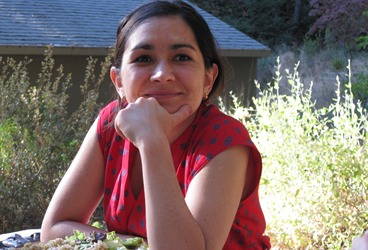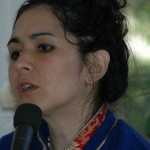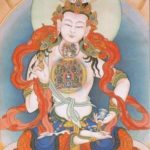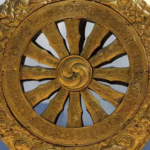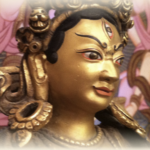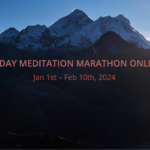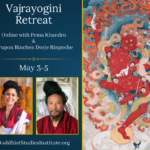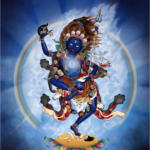Tibetan Yoga practices regulate the flow of energy in the body and mind in order to remove negative tendencies and blocks. The goal is to allow our natural state of sanity and wisdom to emerge. Tibetan Yoga practices vary according to each lineage and tradition, though some practices are more common, such as the nine purifications breathing practice. Tibetan Yoga practices often come from a set of practices known as the six yogas of Naropa, or they may simply be breathing practices, visualizations and physical movements that accompany meditation practice.
Tibetan Yoga can be a great help to meditation practice. In the Great Perfection teachings (Dzogchen) of Buddhism, the quality of meditation is more important than the quantity. It would be better to sit for 10 minutes of alert presence rather than two hours of day-dreaming. This is why meditation practices can be broken up into six different ten minute sessions rather than one sixty minute session. Tibetan Yoga practices also augment meditation to take advantage of the body-mind connection so that your meditation period is lucid and fresh. Rather than just sit for a long period of meditation practice where the mind is distracted, dull or lethargic, Tibetan Yoga practices can be interspersed with silent sitting practice. This way the time spent sitting has a clarity and fresh presence.
Tibetan Yoga practices are also used to promote health in Tibetan Medicine. By balancing the vital energy (Tib. rlung) in the body, these practices can help to change the mind and nervous system which can be considered root factors in many diseases. For example, one set of Tibetan Yoga postures is done to help the body during Tibetan cleansing practices, the movements help to promote peristalsis and massage the organs during the cleansing practice while herbs, teas, oils and water are used to clean the intestines.
Tibetan Yoga and Hatha Yoga have a relationship but there are also differences in the practices. Hatha Yoga is more widely known but many Tibetan Buddhists practice some Tibetan Yoga exercises. The Tibetan Yoga practices often incorporate vigorous movement to break up blocks and stagnation in the body. These practices also emphasize breathing and visualization of inner channels. Classical Hatha Yoga also has a focus on breathing practices and both Hatha Yoga and Tibetan Yoga focus on working with the mind-body relationship through visualization of channels (Sanskrit – nadis) and energy centers (Sanskirt- chakras). However the system of the channels and chakras vary widely from lineage to lineage with some traditions teaching four, five or seven energy centers. People often get confused by these differences and contradictions – but if we understand these as methods rather than truths about the body then it makes sense for a variety of methods to exist, just like there is more than one way to get to the store, there is more than one way to conceive of the mind-body relationship. The essential idea of energy centers and channels is the idea that the body and mind are interwoven and that we can develop our clarity of presence through somatic practices that bring attention to the internal body. Often times we may perceive our body from the outside, or visually imaging how it looks to other people or in comparison to some ideal. These practices promote a different kind of body awareness, one that is internal, visceral and dynamic. The different models of the subtle body provide a tool to explore an internal, somatic and present relationship with our body. The body then becomes a basis for heightening our presence and our self-reflexive awareness in a way that is non-conceptual and direct. In some ways this makes meditation even more accessible, because when we pay attention to our body, it changes. Our breath changes and our mind state changes with it.
– Pema Khandro

